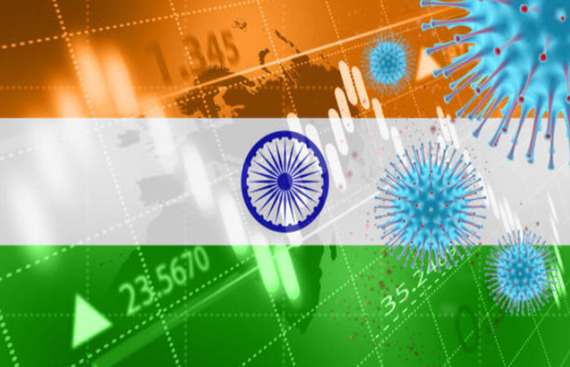World Bank impressed by India's economic recovery amid COVID-19 Pandemic

India's economy has bounced back remarkably well from the COVID-19 pandemic and the subsequent nationwide lockdown over the past one year, however, it is not completely out of the woods yet, according to World Bank. The monetary organization’s latest report has predicted that the country's real GDP growth for fiscal year (FY21-22) could range from 7.5 to 12.5 per cent.The Washington-based global lender, in its latest South Asia Economic Focus report released ahead of the annual Spring meeting of the World Bank and the International Monetary Fund (IMF), said that the Indian economy was already slowing when the COVID-19 pandemic unfolded.
After reaching 8.3 per cent in FY17, growth decelerated to 4.0 per cent in FY20, it revealed.
The slowdown was due to the decline in private consumption growth and shocks to the financial sector (the collapse of a large non-bank finance institution), which exaggerated pre-existing weaknesses in investment, it said.
"Given the significant uncertainty pertaining to both epidemiological and policy developments, the real GDP growth for FY21-22 can range from 7.5 to 12.5 per cent, depending on how the ongoing vaccination campaign proceeds, whether new restrictions to mobility are required, and how quickly the world economy recovers," the World Bank said.
"It is amazing how far India has come compared to a year ago. If you think a year ago, how deep the recession was unprecedented declines in activity of 30 to 40 per cent, no clarity about vaccines, huge uncertainty about the disease. And then if you compare it now, India is bouncing back, has opened up many of the activities, started vaccination and is leading in the production of vaccination," Hans Timmer, World Bank Chief Economist for the South Asia Region, told news agency Press Trust of India.
However, the situation is still incredibly challenging, both on the pandemic side with the flare up of the second wave that is being experienced now. It is an enormous challenge to vaccinate everyone in India, the official said.Most of the people underestimate the challenges, he further added.
On the economic side, Mr Timmer said that even with the rebound, there is uncertainty here about the numbers, but it basically means that over two years there was no growth in India and there might well have been over two years, a decline in per capita income.That's such a difference with what India was accustomed to. And it means that there are still many parts of the economy that have not recovered or have not fared as well as they would have without a pandemic. There is a huge concern about the financial markets, he said.
With economic activities normalizing, domestically and in key export markets, the current account is expected to return to mild deficits (around 1 per cent in FY22 and FY23) and capital inflows are projected by continued accommodative monetary policy and abundant international liquidity conditions, the report said.
The report said that the general government deficit is expected to remain above 10 per cent of GDP until FY22. As a result, public debt is projected to peak at almost 90 per cent of GDP in FY21 before declining gradually thereafter.
As growth resumes and the labour market prospects improve, poverty reduction is expected to return to its pre-pandemic levels.
